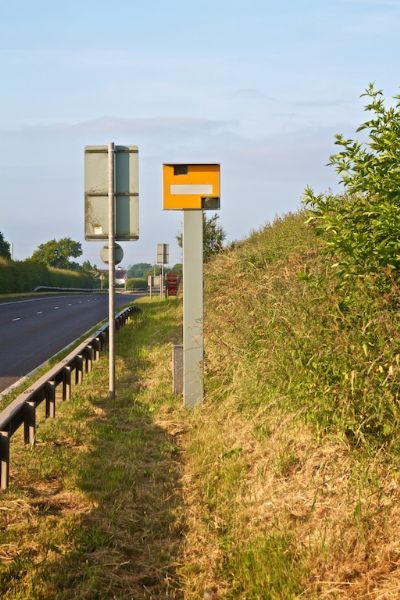





Safe Speed
Driving or riding above the speed limit, or too fast for the current conditions, can have severe consequences for the people in a vehicle, on a motorcycle and other road users, and is recognised by the international community as one of the key road safety risk factors. Speeding is related to crash risk and crash severity.
Speeding can make it more likely that a crash will happen, and when a crash occurs, the severity of injuries is linked to the impact forces that are applied to the body as a result of the crash. Faster speeds can lead to greater impact forces, and therefore, more severe injuries.
It can be difficult to reduce speeding because some drivers and riders find speeding enjoyable or do it because they believe that is saves time. They might underestimate the risk from driving or riding too fast and might be unconcerned about the potential consequences, believing that their driving skill is such that speeding is acceptable.
The Speed Management Hub identifies elements for effective management of speed:
- define the relationship between speed, speeding and safety
- set safe and credible speed limits considering the road hierarchy to give drivers the right information about the acceptable maximum speed
- seek support from politicians and other road safety stakeholders
- apply design or engineering measures to match the speed limits
- enforce speed limits
- design targeted awareness measures which can bring about a change in societal attitudes towards the unacceptability of speeding. Key to this approach is to provide clear evidence on the higher risk of crashes and severe injuries due to driving faster than the speed limit or the road conditions. Changing attitudes to speeding also makes enforcement more effective and acceptable
- promote vehicle technologies to reduce speeding, such as Intelligent Speed Assistance (ISA).
Speed management: a road safety manual for decision-makers and practitioners also provides valuable guidance on managing safe speeds.
While it is difficult to stop some drivers and riders from speeding it is important that every effort is made to do so. It has been estimated that speed is a factor in 30% of crashes. It also increases the severity of the consequences of a crash, both for those in vehicles and especially for any vulnerable road users (such as pedestrians).
Speeding also affects how far a vehicle will travel after the brakes are used in an emergency situation which also makes it more difficult to avoid crashing. Therefore, travel speed is directly associated with stopping distance, an issue that is not necessarily well understood by drivers.
Treatment Summary
Case Studies
| Examples of related Case Studies |
|---|
| Mumbai – Pune Expressway Road Accident Study |
Related Images
 30km/h speed limit at a school in Vietnam. Image credit: Asia Injury Prevention Foundation
30km/h speed limit at a school in Vietnam. Image credit: Asia Injury Prevention Foundation 30km/h speed limit. Photo credit: RdA Suisse
30km/h speed limit. Photo credit: RdA Suisse Fixed speed camera on the A34 - UK. Image credit: Unknown
Fixed speed camera on the A34 - UK. Image credit: Unknown Advisory speed sign plus curve warning. Image credit: ARRB
Advisory speed sign plus curve warning. Image credit: ARRB Car passing a 30km/h speed limit sign. Photo credit: RdA Suisse
Car passing a 30km/h speed limit sign. Photo credit: RdA Suisse School crossing safety improvements in India. Image credit: TRAX
School crossing safety improvements in India. Image credit: TRAX Source: UN road safety collaboration good practice manual for speed management (2008) Image 1
Source: UN road safety collaboration good practice manual for speed management (2008) Image 1 School crossing safety improvements in India. Image credit: TRAX
School crossing safety improvements in India. Image credit: TRAX Source: UN road safety collaboration good practice manual for speed management (2008) Image 1
Source: UN road safety collaboration good practice manual for speed management (2008) Image 1 Source: UN road safety collaboration good practice manual for speed management (2008) Image 1
Source: UN road safety collaboration good practice manual for speed management (2008) Image 1 Speed limit sign in Tanzania. Image credit: Alina Burlacu
Speed limit sign in Tanzania. Image credit: Alina Burlacu Speed limit sign. Image reproduced under the Open Government Licence
Speed limit sign. Image reproduced under the Open Government Licence Traffic calming and speed measurement. Image credit: RdA Suisse
Traffic calming and speed measurement. Image credit: RdA Suisse









